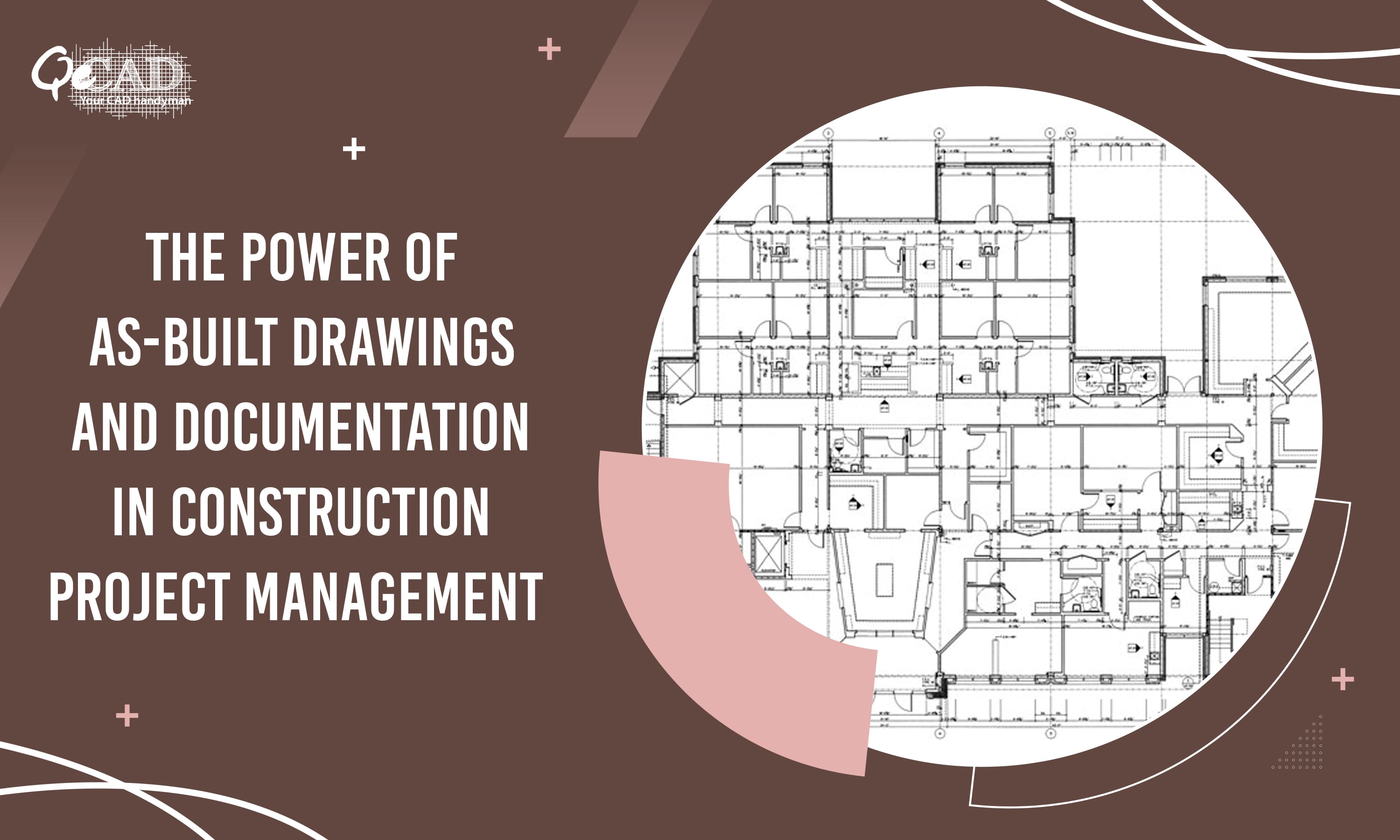
Introduction
When we speak of construction project management, detailed planning and execution are considered of playing very important role. Every stage of the project from initiation to final construction requires precision and attention to detail. One crucial element of this process is the creation and maintenance of as-built drawings and documentation.
In this article, we will get into the significance of As-Built Drawing Services and documentation, their role in construction project management, and best practices for their implementation.
Understanding As-Built Drawings and Documentation
As-built drawings and documentation are the comprehensive records that illustrates the final state of any construction project. They minutely record all alterations undertaken throughout the construction phase, encompassing adjustments, supplements, or deviations from the initial blueprints. They also provide invaluable insights into the structure’s current configuration.
These documents are typically created by comparing the original design drawings with the actual construction, noting any discrepancies, and updating the drawings accordingly. As-built drawings comprise of various elements of the project, including architectural, structural as well as MEP components. They do ensure a holistic representation of the built environment.
The Importance in Construction Project Management
- Accurate Representation: The as-built drawings offer a precise depiction of the finished project. These serve as a valuable point of reference for architects, engineers, contractors, and facility managers. As-builts ensure that the final product aligns well with the initial design intent as well as the regulatory requirements.
- Documentation of Changes: Construction projects often go through many changes throughout their lifecycle. These ranges from design revisions to the on-site modifications. The As-built drawings document these changes thereby allowing for transparency and accountability among project stakeholders. They do offer a historical record of the project’s evolution, aiding in dispute resolution and litigation avoidance.
- Facilitates Maintenance and Renovation: As-built drawings are indispensable for any ongoing maintenance and future renovations. They empower facility managers to identify components, locate utilities, and plan any upgrades efficiently. By providing a detailed overview of the building’s infrastructure, these documents often streamline the decision-making processes thereby minimize costly errors during renovations.
- Regulatory Compliance: Many regulatory authorities has mandated the submission of as-built drawings as part of the approval process for the construction projects. These documents demonstrate compliance with the relevant building codes, zoning ordinances, and other legal requirements. If you fail to maintain accurate as-built documentation, it can result in regulatory fines and project delays.
Best Practices for As-Built Drawing and Documentation
- Real-Time Updates: Do maintain as-built drawings and documentation in real-time throughout the construction process. You can implement protocols to capture any changes as they occur to ensure that the records remain current and accurate.
- Collaboration and Communication: You can foster collaboration among the project teams thereby facilitating the exchange of any information relevant to as-built documentation. By establishing comprehensible communication channels, you can address any discrepancies and resolve conflicts promptly.
- Standardization: Adopt standardized formats and conventions for as-built drawings and documentation to promote consistency and clarity. Ensure that all stakeholders adhere to these standards to enhance interoperability as well as usability.
- Quality Assurance: Implement robust quality assurance processes to verify the accuracy and completeness of as-built drawings and documentation. Conduct regular reviews and audits to identify errors or omissions and take corrective actions as necessary.
- Digital Solutions: Leverage digital tools and technologies for creating, storing, and accessing as-built drawings and documentation. Explore BIM software and other advanced platforms to streamline the documentation process and enhance data integrity.
- Long-Term Maintenance: Recognize the importance of maintaining as-built drawings and documentation beyond the project’s completion. You can establish protocols for updating records as changes occur post-construction thereby ensuring their relevance and usability over time.
Conclusion
As-built drawings and Construction Documentation Services are pivotal in construction management. It provides a comprehensive record of the built environment’s final state. By accurately documenting all the changes, facilitating maintenance and renovations, ensuring regulatory compliance, as well as adhering to the best practices, project teams can harness the full potential of as-built documentation to achieve project success. Embracing advanced technology, transparency, collaboration, and innovation in as-built documentation practices is essential for driving efficiency, reducing risks, and delivering superior outcomes in construction projects.
